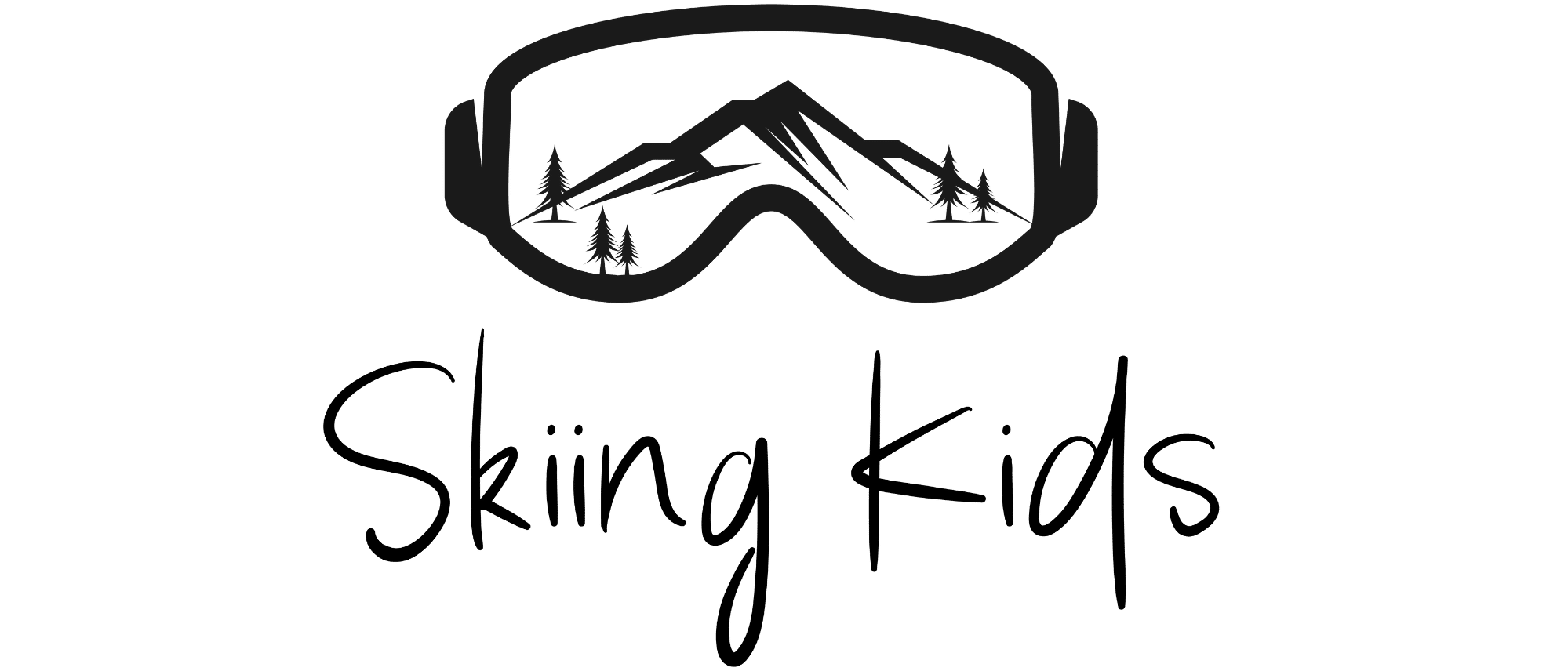This post may contain affiliate links where we earn from qualifying purchases from referring you to our favorite products and brands. As an amazon associate, we earn from qualifying purchases. Find out more in our disclosure.
If you’re a glasses wearer, figuring out what to do can be a bit tricky. While 30 years ago, you would probably just have to wear your glasses skiing, now, there are plenty of great options to help you stay warm and have a good field of vision while skiing AND be able to use your eyeglasses prescription.
- What Are the Options for Ski Goggles if You Wear Glasses?
- Do You Need to Wear Your Glasses While Skiing?
- Considering Prescription Ski Goggles: Pros and Cons
- How Do Over the Glasses (OTG) Goggles Work?
- How to Prevent Glasses from Fogging When Wearing Ski Goggles
- What Are the Best Over-the-Glasses Goggles?
- Review of the Best OTG Goggles for Skiers and Snowboarders
- The Best OTG Goggles for Kids
- Best OTG Goggles for Teens and Adults
- What About A Prescription Goggle Insert with Ski or Snowboard Goggles?
- Can I Wear Prescription Sunglasses Instead of Goggles?
- Can I Wear Contacts with Ski Goggles?
What Are the Options for Ski Goggles if You Wear Glasses?
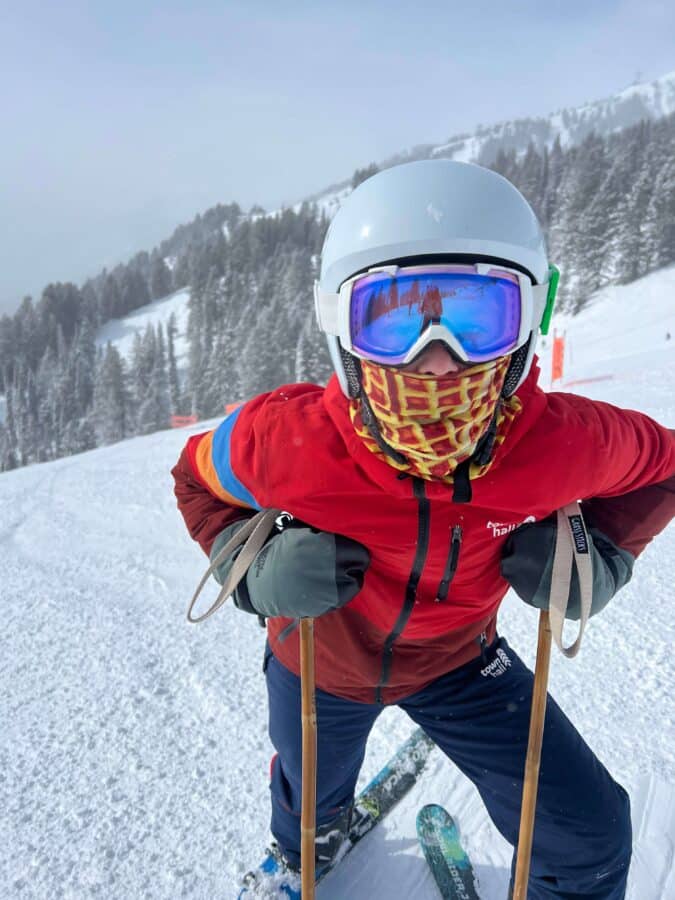
Finding a comfortable and fog-free skiing experience while wearing glasses can be a challenge. Many skiers need corrective lenses to see clearly, and when it comes to skiing, clear vision is not just a matter of convenience but safety. The good news is that there are solutions designed to help glasses wearers hit the slopes with confidence.
The first option is prescription ski goggles. These are ski goggles that are created with your exact prescription so that you can always see clearly when you’re wearing them. You don’t have to worry about your ski goggles fogging up or limiting your field of vision.
Over the Glasses (OTG) goggles are specially shaped to fit over most prescription glasses, allowing you to enjoy skiing without compromising on visual clarity. Some skiers may opt for prescription inserts or even contact lenses as alternatives, but OTG goggles offer a convenient and often more affordable solution.
Below, we’ll discuss the pros and cons of each option to help you choose the right options for your ski goggles.
Do You Need to Wear Your Glasses While Skiing?
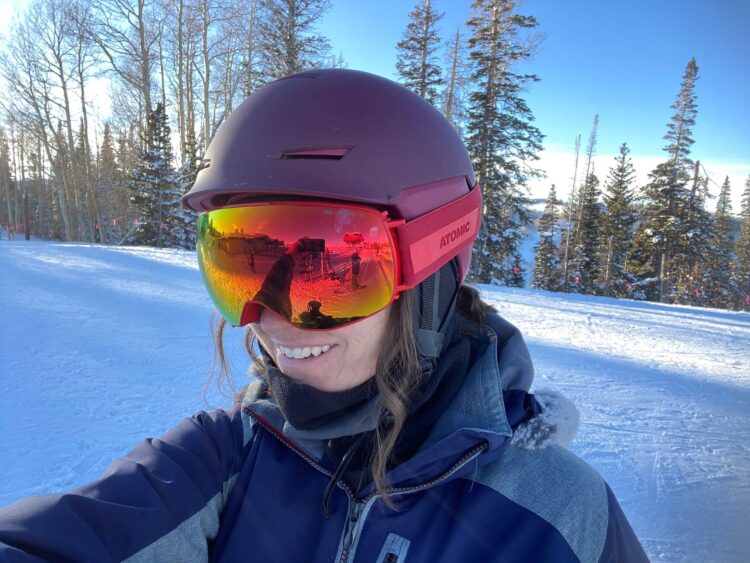
Clear vision is critical for anyone who’s skiing down the hill; anything less compromises the safety of you and others and also makes skiing less fun. Navigating varied terrain and reacting to changing conditions require sharp eyesight, so if you’re tempted to just leave your glasses at home, DON’T. Many skiers grapple with the decision to wear their glasses beneath goggles due to potential discomfort or fogging. I’ve found that for skiers needing prescription lenses, visual clarity’s upsides far outweigh any comfort concerns. With the right pair of goggles, you can tackle the challenges of skiing while wearing glasses, ensuring a focused and enjoyable experience on the mountain.
Latest Posts:
- Beginners Guide to Learning to Ski as an Adult
- 7 Tips for Keeping Wrists Warm in the Winter
- Akova Legacy Collection Review for Men and Women
- 9 Steps to Organizing Ski Gear So You Can Always Find What You Need
- Rocky Talkie Review
Considering Prescription Ski Goggles: Pros and Cons
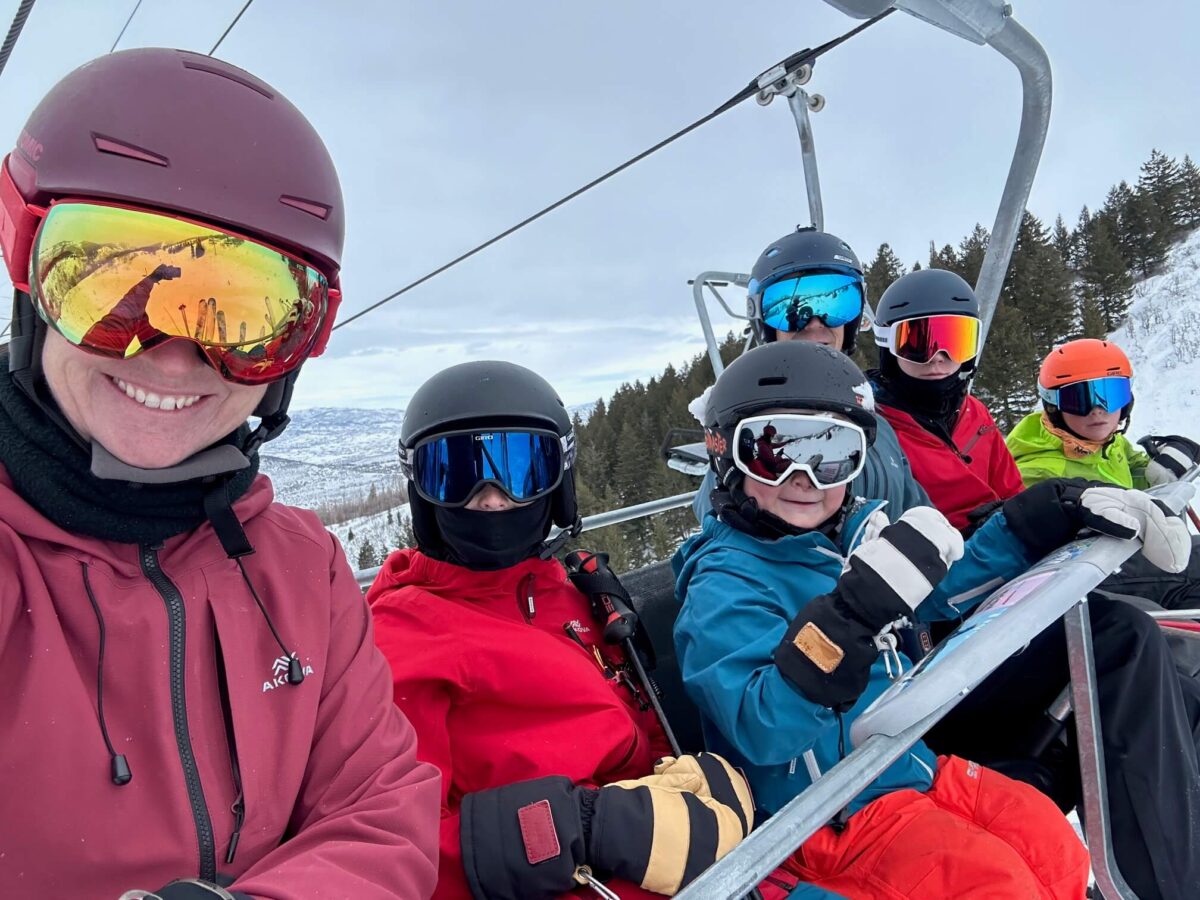
Prescription ski goggles offer clarity and convenience for skiers who normally rely on their glasses to ski clearly, but they’re not for everyone. For adults who are very committed to skiing, these specialized goggles eliminate the common complications associated with OTG options, such as fit issues or the inconvenience of juggling two pairs of glasses. They come with the exact prescription fitted within the lens, granting uncompromised vision and comfort. On the flip side, the price and the investment might not justify their value for casual skiers or children, especially since young skiers may outgrow their current prescription rather quickly. For them, OTG goggles are a practical and cost-effective solution, providing an ample fit over everyday glasses with designs aimed at ease of use and fog reduction.
How Do Over the Glasses (OTG) Goggles Work?
Over the Glasses (OTG) ski goggles are specifically engineered to fit comfortably over your prescription glasses. Their design features deeper frames and notches at the temples to allow glasses’ arms to pass through without causing much pressure or discomfort. Built-in air channels promote ventilation and reduce the chance of fogging both the goggles and glasses. Manufacturers understand the need for a wide field of vision; therefore, OTG goggles are often crafted with expanded lens sizes to ensure nothing obstructs your peripheral view. When selecting OTG goggles, look for models with ample padding that not only adds comfort but also creates a secure seal around a pair of glasses, which further aids in preventing air leakage and fogging while skiing.
How to Prevent Glasses from Fogging When Wearing Ski Goggles
One of biggest complaints for skiers who wear glasses is having their glasses fog up under their goggles. Fogging can turn a great day on the slopes into a blurry hassle. To keep your vision crystal clear, ensure your over-the-glasses (OTG) ski goggles have adequate ventilation; this circulates air and reduces moisture buildup. A little trick you can try is to apply anti-fog solutions to your lenses; they’re specifically designed to repel condensation. Another effective strategy is to create a gap between your face and the goggles for a few minutes on your lift ride up, letting fresh air in to clear away fog before you start skiing down. Lastly, always dry your goggles and glasses at room temperature after each use, as residual moisture can cause fogging when you hit the cold mountain air.
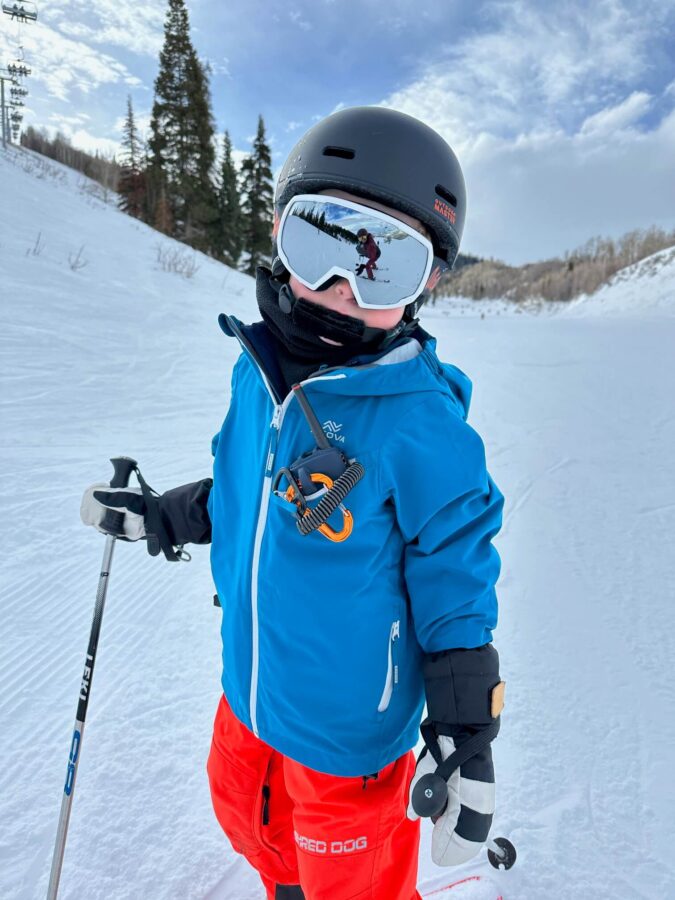
What Are the Best Over-the-Glasses Goggles?
For most glasses wearers, Over the Glasses (OTG) ski goggles are one of the best solutions to allow you to still see without spending a crazy amount of money. These innovative goggles are specifically tailored to fit comfortably over your everyday glasses, ensuring that your vision remains unobstructed, while also protecting your eyes from the harsh conditions of the mountain environment. Selecting the best pair of OTG goggles depends largely on comfort, and it’s a critical decision that can significantly impact your comfort and visibility while skiing, so make sure to try on several pairs. With the right OTG goggles, you can focus on carving up the slopes instead of fussing with your eyewear.
Review of the Best OTG Goggles for Skiers and Snowboarders
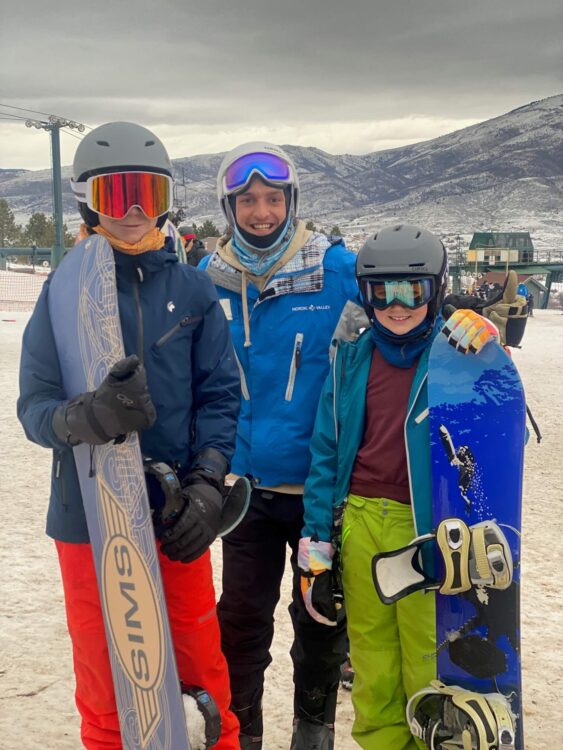
I’ve taken a close look at a range of OTG (Over the Glasses) ski goggles to find the best options that seamlessly accommodate glasses underneath, ensuring you enjoy a clear, fog-free experience on the slopes. Each pair has been carefully evaluated based on its design, comfort, and specific features that cater to glasses wearers. Let’s dive into the details of each model, noting the unique attributes that qualify them as top picks for skiers and snowboarders who need an over-glasses solution. From ventilation and lens quality to fit and style, these reviews will help you make an informed decision for a comfortable and enjoyable ski adventure. Whether you’re a parent seeking a viable option for your child, or an adult looking for a reliable pair to enhance your downhill experience, these mini-reviews will cover the essentials, pairing you with the perfect OTG goggles.
The Best OTG Goggles for Kids
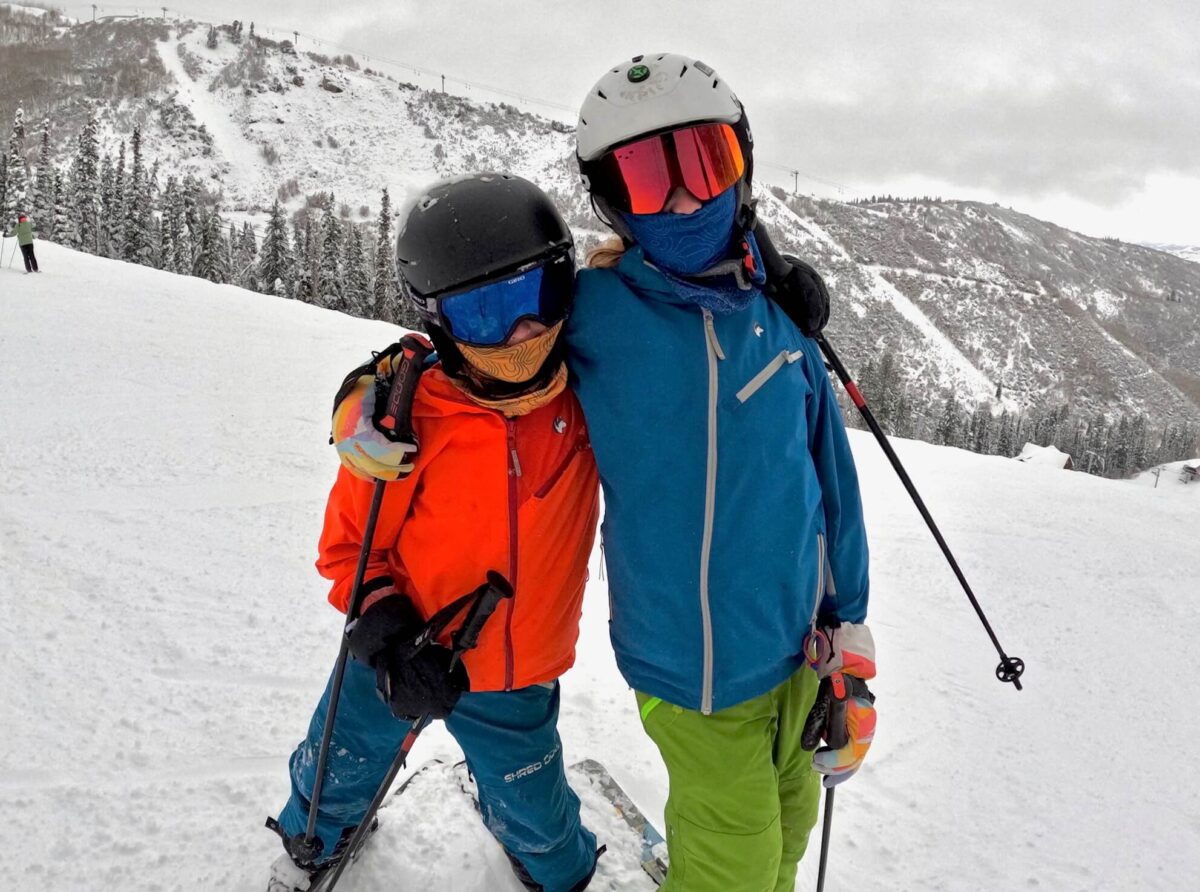
Outdoor Master Falcon Kids OTG Goggles
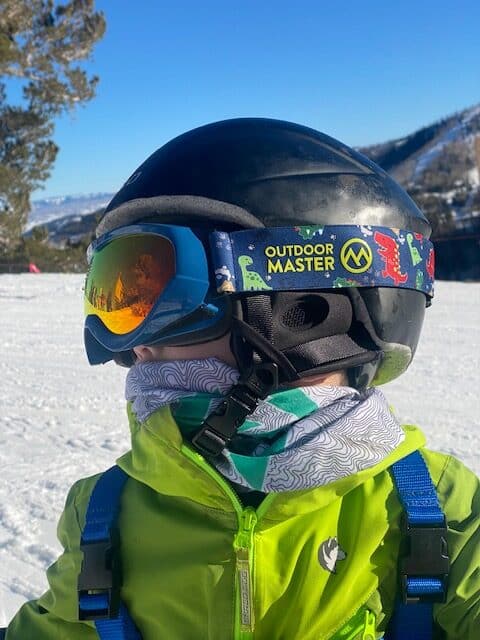
Designed specifically for kids, these goggles accommodate a wide range of prescription glasses, ensuring a comfortable and secure fit. These are some of our kids favorite goggles and they especially appreciate the wide field of vision. The anti-fog coating and dual-layer lens technology work together to prevent any vision obstruction due to condensation, which is critical when skiing. Adjustability is key with their elastic strap that effortlessly adapts to different helmet sizes and shapes, making them versatile for different users. Lastly, wider peripheral vision is a standout feature that provides kids with the expanded field of view necessary for both safety and enjoyment.
Smith Daredevil Kids OTG Goggles

These goggles feature Live Fit frames which mold to the contours of your face, offering a tailored and comfortable fit without applying pressure to your glasses. An adaptive Tri-Layer foam furthers this custom fitment, preventing any unwelcome gaps that can invite cold air or moisture. Their spherical lenses not only provide a wide field of vision but also boast anti-fog and anti-scratch coatings, ensuring unobstructed and long-lasting clarity. As a skier or snowboarder who wears glasses, you will appreciate the compatibility and thoughtful design that these goggles offer, making your time on the mountain both comfortable and clear.
What About A Prescription Goggle Insert with Ski or Snowboard Goggles?
If you’re looking for another option besides wearing glasses skiing, consider getting a prescription goggle insert. This can make wearing glasses more comfortable but will be more affordable than buying prescription ski goggles.
Can I Wear Prescription Sunglasses Instead of Goggles?
For good weather skiing, prescription sunglasesses can be a good option. This is assuming you’ll be going relatively slow and controlled. If you’re skiing fast, or the wind is blowing, the wind on your eyes can cause both discomfort and damage, so we recommend wearing goggles. Also, keep in mind that goggles keep your face warmer and protect it from bad weather and the elements.
Can I Wear Contacts with Ski Goggles?
Absolutely, YES! If contacts are an option for you, I recommend wearing those instead of glasses. You won’t have to worry about fogging glasses or with uncomfortable glasses arms.
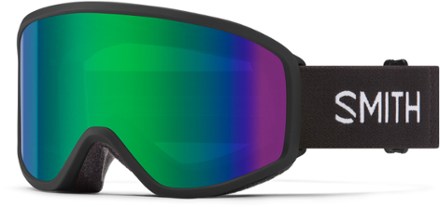
I’ve discovered that the Smith Reason OTG Goggles stand out for their superior design catering to glasses wearers. With a floating foam membrane that eliminates temple pressure, they ensure a comfortable fit even during extended use on the slopes. The goggles also boast an ample interior volume to accommodate a wide range of glasses sizes without compromising on style or peripheral vision. Smith’s proprietary anti-fog technology, combined with active ventilation, keeps both the goggles and glasses clear from moisture build-up. Lastly, the Smith Reason OTG Goggles integrate seamlessly with helmets, offering not only convenience but also safety, which is a priority for me and should be for all skiers.
Atomic Revent L Stereo OTG Goggles

These goggles feature Live Fit frames which mold to the contours of your face, offering a tailored and comfortable fit without applying pressure to your glasses. An adaptive Tri-Layer foam furthers this custom fitment, preventing any unwelcome gaps that can invite cold air or moisture. Their spherical lenses not only provide a wide field of vision but also boast anti-fog and anti-scratch coatings, ensuring unobstructed and long-lasting clarity. As a skier or snowboarder who wears glasses, you will appreciate the compatibility and thoughtful design that these goggles offer, making your time on the mountain both comfortable and clear.
What About A Prescription Goggle Insert with Ski or Snowboard Goggles?
If you’re looking for another option besides wearing glasses skiing, consider getting a prescription goggle insert. This can make wearing glasses more comfortable but will be more affordable than buying prescription ski goggles.
Can I Wear Prescription Sunglasses Instead of Goggles?
For good weather skiing, prescription sunglasesses can be a good option. This is assuming you’ll be going relatively slow and controlled. If you’re skiing fast, or the wind is blowing, the wind on your eyes can cause both discomfort and damage, so we recommend wearing goggles. Also, keep in mind that goggles keep your face warmer and protect it from bad weather and the elements.
Can I Wear Contacts with Ski Goggles?
Absolutely, YES! If contacts are an option for you, I recommend wearing those instead of glasses. You won’t have to worry about fogging glasses or with uncomfortable glasses arms.

The Oakley O Frame Goggles stand out for their exceptional clarity. Their large lens size offers a wide field of vision while still accommodating prescription frames. With a streamlined frame and notches at the temples, these goggles fit snugly over most glasses without applying uncomfortable pressure. The F2 Anti-fog coating reduces the risk of lens misting up, and the good ventilation also helps to keep glasses from fogging up. With impact-resistant Lexan lenses, these goggles are built to be an extra safe option for ski and snowboard goggles, since the last thing you want to worry about is breaking your goggles and glasses on the hill.
Dragon D1 OTG Ski Goggles
The spacious interior of the Dragon D1 goggles allows plenty of room for glasses, ensuring no pressure against your face. A standout feature is the armored venting system, which makes clearing out snow-packed lenses a breeze. The fleece lining on the foam offers a touch of comfort amidst the rugged features. These goggles are tailored for durability and clarity, with anti-fog treatment and 100% UV protection, meaning you can tackle the slopes with confidence, knowing your vision is unobstructed.
Smith Reason OTG Goggles for Skiing

I’ve discovered that the Smith Reason OTG Goggles stand out for their superior design catering to glasses wearers. With a floating foam membrane that eliminates temple pressure, they ensure a comfortable fit even during extended use on the slopes. The goggles also boast an ample interior volume to accommodate a wide range of glasses sizes without compromising on style or peripheral vision. Smith’s proprietary anti-fog technology, combined with active ventilation, keeps both the goggles and glasses clear from moisture build-up. Lastly, the Smith Reason OTG Goggles integrate seamlessly with helmets, offering not only convenience but also safety, which is a priority for me and should be for all skiers.
Atomic Revent L Stereo OTG Goggles

These goggles feature Live Fit frames which mold to the contours of your face, offering a tailored and comfortable fit without applying pressure to your glasses. An adaptive Tri-Layer foam furthers this custom fitment, preventing any unwelcome gaps that can invite cold air or moisture. Their spherical lenses not only provide a wide field of vision but also boast anti-fog and anti-scratch coatings, ensuring unobstructed and long-lasting clarity. As a skier or snowboarder who wears glasses, you will appreciate the compatibility and thoughtful design that these goggles offer, making your time on the mountain both comfortable and clear.
What About A Prescription Goggle Insert with Ski or Snowboard Goggles?
If you’re looking for another option besides wearing glasses skiing, consider getting a prescription goggle insert. This can make wearing glasses more comfortable but will be more affordable than buying prescription ski goggles.
Can I Wear Prescription Sunglasses Instead of Goggles?
For good weather skiing, prescription sunglasesses can be a good option. This is assuming you’ll be going relatively slow and controlled. If you’re skiing fast, or the wind is blowing, the wind on your eyes can cause both discomfort and damage, so we recommend wearing goggles. Also, keep in mind that goggles keep your face warmer and protect it from bad weather and the elements.
Can I Wear Contacts with Ski Goggles?
Absolutely, YES! If contacts are an option for you, I recommend wearing those instead of glasses. You won’t have to worry about fogging glasses or with uncomfortable glasses arms.
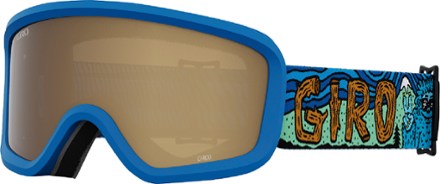
The Giro Chico 2.0 Snow Goggles offer young skiers a solution for comfortably wearing glasses on the ski hill. They feature a thoughtfully engineered, over-the-glasses design, providing lots of interior space to prevent any uncomfortable pressure on the glasses. A dual-layer face foam ensures a snug yet soft fit on a child’s face, enhancing warmth and minimizing gaps that could let in cold air or snow.
Best OTG Goggles for Teens and Adults
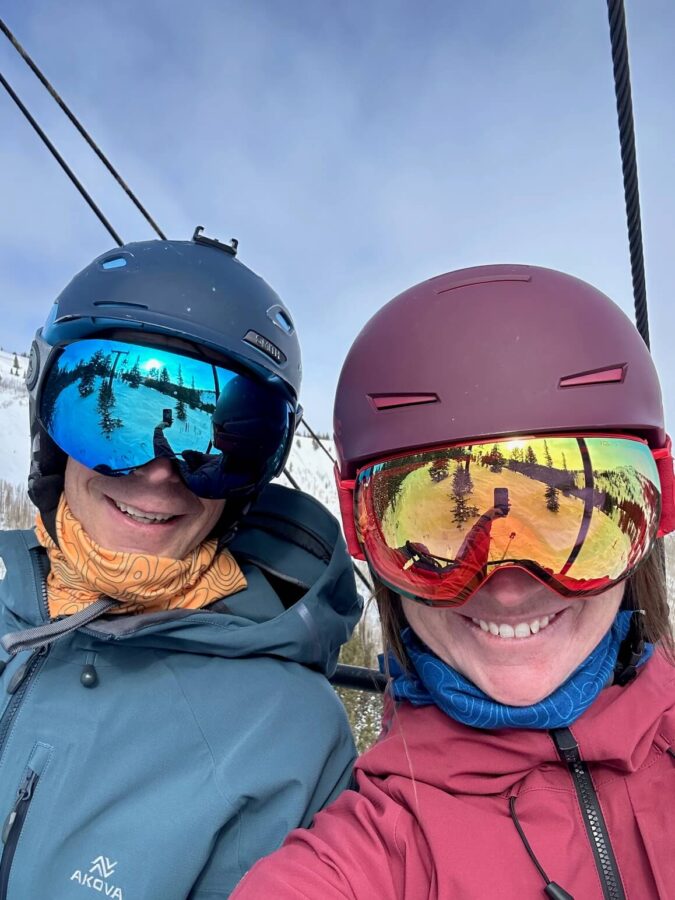
Oakley O Frame 2.0 Pro L Ski and Snowboard Goggles

The Oakley O Frame Goggles stand out for their exceptional clarity. Their large lens size offers a wide field of vision while still accommodating prescription frames. With a streamlined frame and notches at the temples, these goggles fit snugly over most glasses without applying uncomfortable pressure. The F2 Anti-fog coating reduces the risk of lens misting up, and the good ventilation also helps to keep glasses from fogging up. With impact-resistant Lexan lenses, these goggles are built to be an extra safe option for ski and snowboard goggles, since the last thing you want to worry about is breaking your goggles and glasses on the hill.
Dragon D1 OTG Ski Goggles
The spacious interior of the Dragon D1 goggles allows plenty of room for glasses, ensuring no pressure against your face. A standout feature is the armored venting system, which makes clearing out snow-packed lenses a breeze. The fleece lining on the foam offers a touch of comfort amidst the rugged features. These goggles are tailored for durability and clarity, with anti-fog treatment and 100% UV protection, meaning you can tackle the slopes with confidence, knowing your vision is unobstructed.
Smith Reason OTG Goggles for Skiing

I’ve discovered that the Smith Reason OTG Goggles stand out for their superior design catering to glasses wearers. With a floating foam membrane that eliminates temple pressure, they ensure a comfortable fit even during extended use on the slopes. The goggles also boast an ample interior volume to accommodate a wide range of glasses sizes without compromising on style or peripheral vision. Smith’s proprietary anti-fog technology, combined with active ventilation, keeps both the goggles and glasses clear from moisture build-up. Lastly, the Smith Reason OTG Goggles integrate seamlessly with helmets, offering not only convenience but also safety, which is a priority for me and should be for all skiers.
Atomic Revent L Stereo OTG Goggles

These goggles feature Live Fit frames which mold to the contours of your face, offering a tailored and comfortable fit without applying pressure to your glasses. An adaptive Tri-Layer foam furthers this custom fitment, preventing any unwelcome gaps that can invite cold air or moisture. Their spherical lenses not only provide a wide field of vision but also boast anti-fog and anti-scratch coatings, ensuring unobstructed and long-lasting clarity. As a skier or snowboarder who wears glasses, you will appreciate the compatibility and thoughtful design that these goggles offer, making your time on the mountain both comfortable and clear.
What About A Prescription Goggle Insert with Ski or Snowboard Goggles?
If you’re looking for another option besides wearing glasses skiing, consider getting a prescription goggle insert. This can make wearing glasses more comfortable but will be more affordable than buying prescription ski goggles.
Can I Wear Prescription Sunglasses Instead of Goggles?
For good weather skiing, prescription sunglasesses can be a good option. This is assuming you’ll be going relatively slow and controlled. If you’re skiing fast, or the wind is blowing, the wind on your eyes can cause both discomfort and damage, so we recommend wearing goggles. Also, keep in mind that goggles keep your face warmer and protect it from bad weather and the elements.
Can I Wear Contacts with Ski Goggles?
Absolutely, YES! If contacts are an option for you, I recommend wearing those instead of glasses. You won’t have to worry about fogging glasses or with uncomfortable glasses arms.
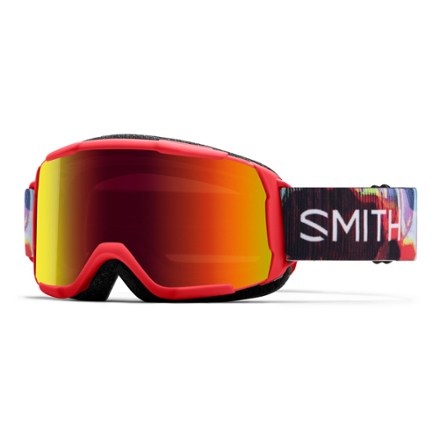
With a floating foam membrane to eliminate temple pressure, they ensure a snug yet gentle fit over eyewear. These goggles also boast a Fog-X anti-fog treatment on the lens, providing clear vision and helping to maintain an unobstructed view in varying weather conditions. Additionally, the dual-slide strap adjustment system allows for easy fitting adjustments, even when wearing gloves. Overall, the Smith Daredevil Kids OTG Goggles stand out for their well-thought-out design, delivering both performance and comfort on the slopes.
Giro Chico 2.0 Snow Goggles for Kids

The Giro Chico 2.0 Snow Goggles offer young skiers a solution for comfortably wearing glasses on the ski hill. They feature a thoughtfully engineered, over-the-glasses design, providing lots of interior space to prevent any uncomfortable pressure on the glasses. A dual-layer face foam ensures a snug yet soft fit on a child’s face, enhancing warmth and minimizing gaps that could let in cold air or snow.
Best OTG Goggles for Teens and Adults

Oakley O Frame 2.0 Pro L Ski and Snowboard Goggles

The Oakley O Frame Goggles stand out for their exceptional clarity. Their large lens size offers a wide field of vision while still accommodating prescription frames. With a streamlined frame and notches at the temples, these goggles fit snugly over most glasses without applying uncomfortable pressure. The F2 Anti-fog coating reduces the risk of lens misting up, and the good ventilation also helps to keep glasses from fogging up. With impact-resistant Lexan lenses, these goggles are built to be an extra safe option for ski and snowboard goggles, since the last thing you want to worry about is breaking your goggles and glasses on the hill.
Dragon D1 OTG Ski Goggles
The spacious interior of the Dragon D1 goggles allows plenty of room for glasses, ensuring no pressure against your face. A standout feature is the armored venting system, which makes clearing out snow-packed lenses a breeze. The fleece lining on the foam offers a touch of comfort amidst the rugged features. These goggles are tailored for durability and clarity, with anti-fog treatment and 100% UV protection, meaning you can tackle the slopes with confidence, knowing your vision is unobstructed.
Smith Reason OTG Goggles for Skiing

I’ve discovered that the Smith Reason OTG Goggles stand out for their superior design catering to glasses wearers. With a floating foam membrane that eliminates temple pressure, they ensure a comfortable fit even during extended use on the slopes. The goggles also boast an ample interior volume to accommodate a wide range of glasses sizes without compromising on style or peripheral vision. Smith’s proprietary anti-fog technology, combined with active ventilation, keeps both the goggles and glasses clear from moisture build-up. Lastly, the Smith Reason OTG Goggles integrate seamlessly with helmets, offering not only convenience but also safety, which is a priority for me and should be for all skiers.
Atomic Revent L Stereo OTG Goggles

These goggles feature Live Fit frames which mold to the contours of your face, offering a tailored and comfortable fit without applying pressure to your glasses. An adaptive Tri-Layer foam furthers this custom fitment, preventing any unwelcome gaps that can invite cold air or moisture. Their spherical lenses not only provide a wide field of vision but also boast anti-fog and anti-scratch coatings, ensuring unobstructed and long-lasting clarity. As a skier or snowboarder who wears glasses, you will appreciate the compatibility and thoughtful design that these goggles offer, making your time on the mountain both comfortable and clear.
What About A Prescription Goggle Insert with Ski or Snowboard Goggles?
If you’re looking for another option besides wearing glasses skiing, consider getting a prescription goggle insert. This can make wearing glasses more comfortable but will be more affordable than buying prescription ski goggles.
Can I Wear Prescription Sunglasses Instead of Goggles?
For good weather skiing, prescription sunglasesses can be a good option. This is assuming you’ll be going relatively slow and controlled. If you’re skiing fast, or the wind is blowing, the wind on your eyes can cause both discomfort and damage, so we recommend wearing goggles. Also, keep in mind that goggles keep your face warmer and protect it from bad weather and the elements.
Can I Wear Contacts with Ski Goggles?
Absolutely, YES! If contacts are an option for you, I recommend wearing those instead of glasses. You won’t have to worry about fogging glasses or with uncomfortable glasses arms.
